The Gymnocalycium Friedrichii belongs to a group of succulents that are known as dwarf succulents. This is because of their very small size.
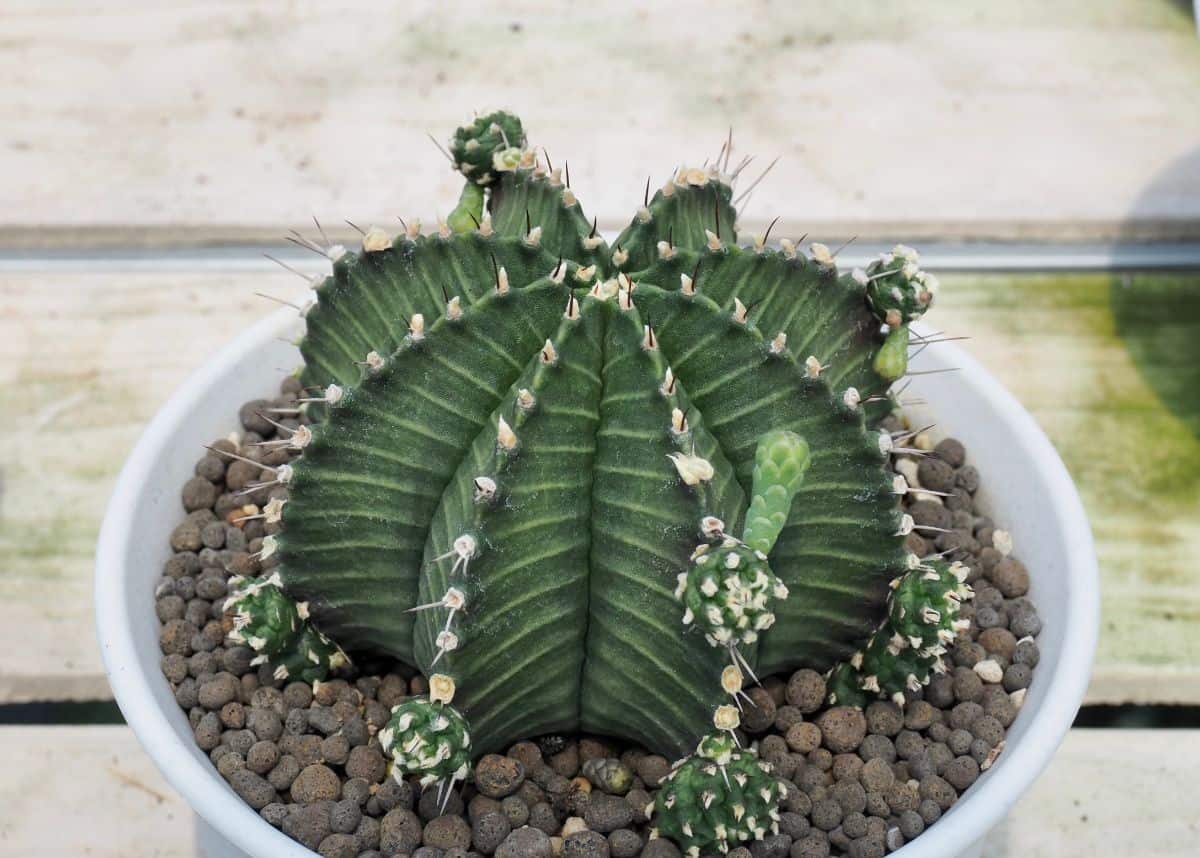
The name Gymnocalycium Friedrichii is not this succulent’s full name. This is a shortened form of the name Gymnocalycium Mihanovichii Friedrichii. This plant is also more commonly known and referred to by its nickname of Chin Cactus.
The full biological name might seem very long, complicated, and difficult to pronounce. But this is because it comes from Greek. Most plants get their biological names either from Greek or from Latin, and sometimes even a combination of the two.
The name Gymnocalycium comes from a combination of two Greek words: gymnos, which means ‘naked’, and kalyx, which means ‘bud’. The reason for this name is the fact that the flowers, or buds, are bare and are not covered in spines, like most other cactus species are.
The Gymnocalycium Friedrichii is known to be a slow-growing succulent and takes many years to reach its full - albeit small- size.
By nurturing and caring for this plant lovingly, you may succeed in getting it to grow slightly bigger than its usual 1.5-2 inches tall, but it will never grow into a full-sized cactus. It will always remain a dwarf.
The Gymnocalycium Friedrichii is native to the outlying areas of Paraguay, where it is used to a hot, dry climate that receives very little rainfall.
Jump to:
- Gymnocalycium Friedrichii Appearance
- Caring for the Gymnocalycium Friedrichii
- Light
- Water
- Watering from the top
- Watering from the bottom
- Temperature
- Soil
- Propagating the Gymnocalycium Friedrichii
- Propagating from seeds
- Propagating from cuttings
- Common pests and problems with the Gymnocalycium Friedrichii
- Overwatering
- Insect infestation
Gymnocalycium Friedrichii Appearance
| Name: | Gymnocalycium Mihanovichii Friedrichii |
| Soil: | Cactus soil with good drainage |
| Blooming: | March, and continue for many months |
| Light: | Partial shade |
| Water: | When the soil is dry |
| Propagation: | Stem cuttings and seeds. |
The Gymnocalycium Friedrichii has a somewhat unusual appearance, due to its small size. It is well known for its pretty looks. It is almost perfectly round in shape, and extremely small. It will reach a maximum height of about 2 inches, and has a diameter of about 2.5-3 inches.
The stems are spherical, with between 8-10 ribs on each stem. They are usually green, but occasionally develop a reddish tinge from exposure to the sun. These succulents grow in clumps and often produce offsets that tend to self propagate. This can make their bushes look very full over time.
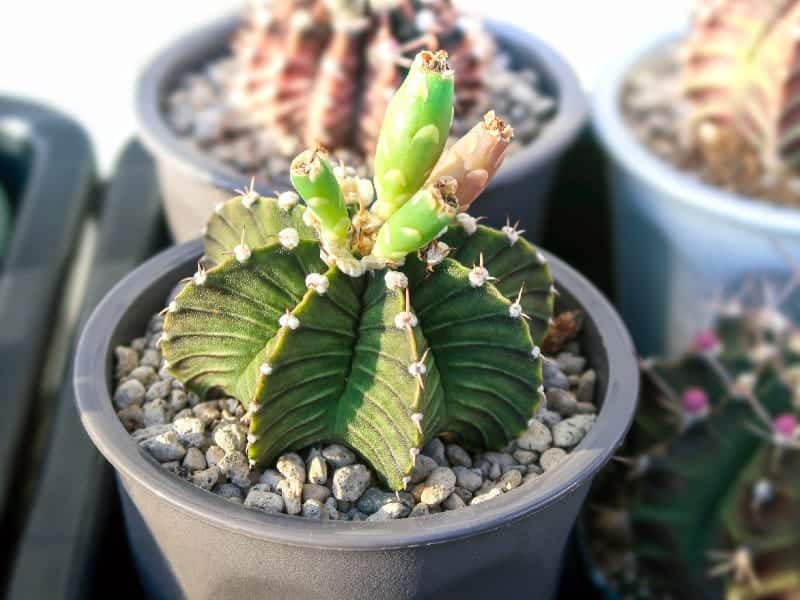
Buy it from:
The Gymnocalycium Friedrichii produces a small flower, in a broad range of colors. The most commonly seen colors are white, yellow, green, and pink. The flowers are small, with a width of no more than 1-1.5 inches.
The flowers are very delicate, with a soft, fuzzy texture. As soft and delicate as the flowers may be, they are protected by sharp, needle-like thorns that surround them on the stems. These can be extremely painful if they get stuck in your skin. Therefore they should be handled with great care, and protective gloves should always be worn to avoid the thorns piercing your skin.
Caring for the Gymnocalycium Friedrichii
The Gymnocalycium Friedrichii is an uncomplicated little succulent. It is not too difficult to care for it. Cultivating this plant is fairly simple, and it should do very well as long as its basic needs are met.
The most important of a succulent’s basic needs are the right amount of light, sufficient water, correct temperature levels, and the correct soil composition.
Light
The Gymnocalycium Friedrichii is very similar to most other cactus plants when it comes to how much light it needs. These plants are native to hot, arid areas where the only shade that exists is dappled shade from other plants and trees.
This succulent needs at least 6 hours of direct sunlight a day. It is best for your Gymnocalycium Friedrichii cactus plant to be cultivated in beds outdoors, where it should be planted in a spot that gets full sun with partial shade.
It can be a little tricky to find the perfect balance between enough sun and too much sun. Even though these succulents are sun-lovers that are used to bright sunlight, over-exposure to the intense rays of the sun all day long can also do damage and cause the plant to shrivel and dehydrate.
It is important that the spot you choose should resemble the natural environment as closely as possible, providing some filtered shade for at least part of the day.
If you wish to cultivate your Gymnocalycium Friedrichii as an indoor house plant, choose a room in your house that gets a lot of direct natural sunlight. If you live in the northern hemisphere, a room that is south-facing would be the best choice. Your succulent will grow quite successfully and happily on a windowsill there.
If your house does not have a room that gets sufficient natural light, do not despair. It is still possible to cultivate a Gymnocalycium Friedrichii dwarf cactus indoors. You will need the help of a grow light to supplement the inadequate natural light and boost your plant’s growth.
No products found.
A grow light is an electric light that has been designed specifically for horticultural purposes. These lights are available from most garden centers and nurseries and are not terribly costly. A simple grow light can be purchased for under $50.
Even though the light emitted by a grow light is essentially artificial light, it mimics natural light in such a way that plants under a grow light are still able to undergo the process of photosynthesis.
Photosynthesis is the process by which plants manufacture chlorophyll, a natural chemical that is essential for nourishing the plant. Without sufficient light, photosynthesis cannot take place and the plant will be starved of chlorophyll. It will eventually die, essentially from malnutrition. Therefore it is always advisable that you ensure that your plants receive sufficient light.
Water
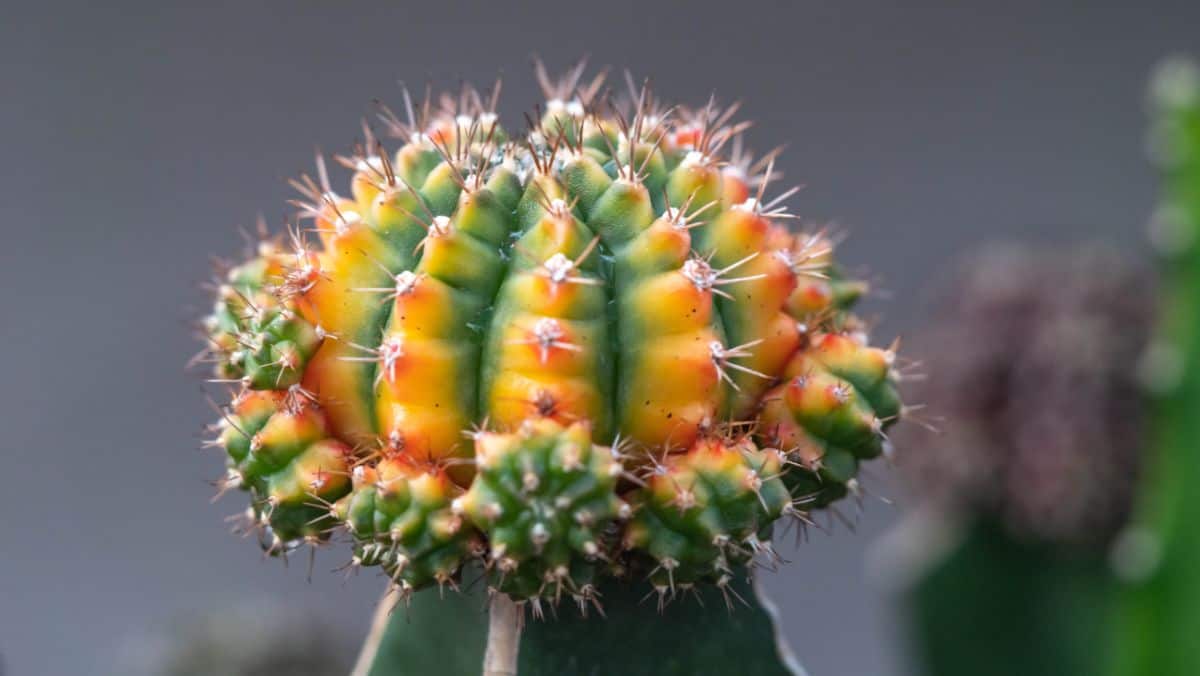
In its native Paraguay, the Gymnocalycium Friedrichii receives only a limited amount of natural rainwater. The area is hot and dry, with an average rainfall of less than 50 inches per year.
In your garden, the Gymnocalycium Friedrichii does not need much water. When watering this plant, the best watering schedule to follow is the method of deep soaking, followed by complete drying out.
It is essential that the soil should have good drainage, to allow for excess water to run off freely. One of the biggest problems with succulent plants is excessive watering, coupled with insufficient drainage. This can affect the roots very badly.
If you are cultivating the Gymnocalycium Friedrichii as an indoor house plant, you should make sure that the container has sufficient drainage holes at the bottom, so that water does not collect and sit around the roots.
When watering your succulents that are in containers, you can either use a watering can and water from the top, or you can water from the bottom.
Watering from the top
When watering from the top, it is recommended to use a watering can with a long, narrow spout. In this way you can aim the flow of water more accurately, pouring it directly around the base of the plant.
Try to avoid letting the leaves get too wet. If water sits in the crevices and folds of the leaves, they may start to go soft and mushy.
If the leaves are looking very dry and feel brittle, they can be revived with a light spray of water from a spray mist bottle. But this should not replace deep watering of the roots.
Watering from the bottom
If your Gymnocalycium Friedrichii is in a pot, watering from the bottom is an effective method of providing your succulent with as much water as it needs, provided that your pot has excellent drainage holes at the bottom.
Fill a shallow dish with water. Place the pot in the dish of water, and leave it to stand for about an hour. The plant will absorb as much water as it needs through the drainage holes at the bottom of the pot. Remove the pot from the dish of water after one hour.
If the pot is left standing in the dish of water for too long, the soil will become water-logged and the roots may start to develop fungal growth. This will cause root rot to set in, which is extremely damaging to the plant.
How often should you water the Gymnocalycium Friedrichii?
The Gymnocalycium Friedrichii undergoes its greatest growth during the summer months when it should be watered about once a week.
In the winter months, the Gymnocalycium Friedrichii is dormant, and no growth takes place during this period. Therefore it hardly needs any water throughout winter.
At the beginning of spring, as the succulent is ‘waking up’ from its dormant period, watering should be introduced very gradually, rather than suddenly giving the plant thorough and frequent soakings.
Towards the end of summer, as the days start to get cooler and shorter, watering can gradually be tapered down. If you follow the watering guidelines set out below, your Gymnocalycium Friedrichii should get all the water that it needs.
- At the beginning of spring, as soon as the weather starts to warm up and the nights are not so cold, start with light watering every two weeks.
- As summer sets in, increase watering to once a week and start watering more deeply.
- Allow the soil to get thoroughly soaked at each watering, but make sure that it has dried out completely before watering again. This should happen after about one week.
- As soon as night temperatures start to drop and the days start getting cooler, reduce watering to once every two weeks, and cut down the amount of water given each time.
- After 4 weeks of reduced watering, stop watering the roots completely, only spraying with a light mist every few weeks. Keep this up through the whole of winter.
- As soon as winter starts drawing to a close, repeat the cycle.
Temperature
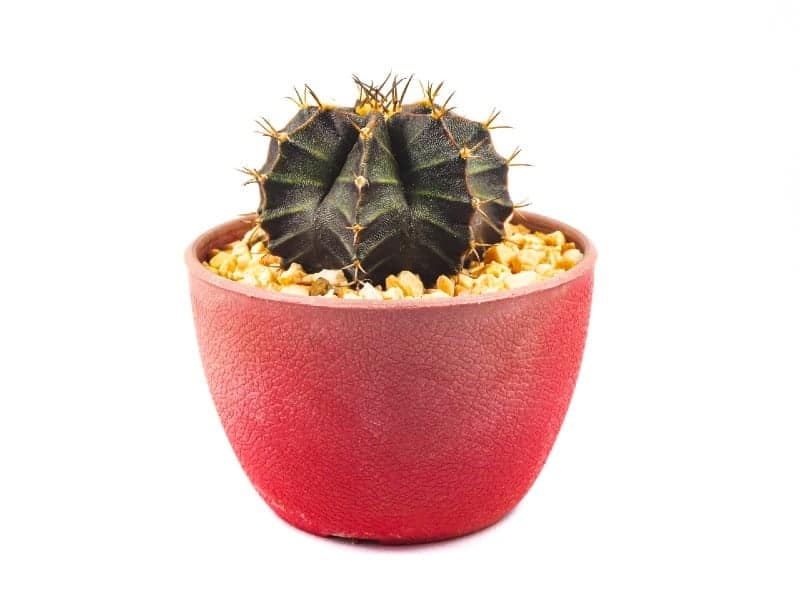
The Gymnocalycium Friedrichii is no different from most other species of succulents in that it likes hot weather. It is native to an area that seldom experiences truly cold conditions. Therefore it is ill-equipped to cope with severe cold.
The Gymnocalycium Friedrichii cannot survive in temperatures lower than 25° Fahrenheit.
It should only be planted outdoors if you live in an area that has a warm climate and does not experience very harsh winters. If, however, you live in a colder area, it is advisable to plant your Gymnocalycium Friedrichii in containers. In this way, they can be taken indoors during the colder months.
The Gymnocalycium Friedrichii will not be able to tolerate regular exposure to frost. When the frost settles on plants, the icicles cause the cells in the leaves to swell and freeze. This causes damage to the leaves, and eventually kills the plant.
If overnight frost is expected, it is recommended to either bring your Gymnocalycium Friedrichii indoors or undercover, or to cover it lightly with a thin, light piece of fabric or netting. This will prevent it from suffering from frostbite.
The Gymnocalycium Friedrichii does not enjoy drastic and sudden changes in temperature. If it is subjected to sudden changes in temperature in its environment, it may not be able to adjust and settle down properly afterward. If you are keeping it indoors, it should be kept in a room with a steady temperature, ideally between 65° - 80°.
Soil
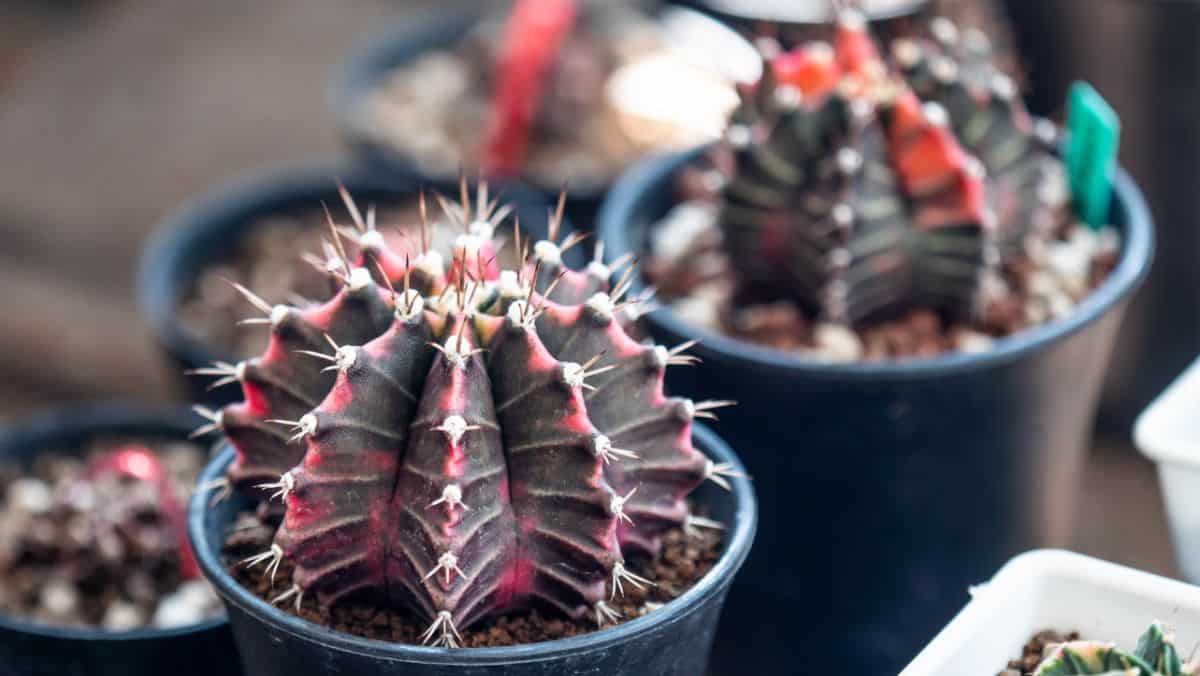
The Gymnocalycium Friedrichii does not have any specific soil requirements with regard to the pH level of the soil. It does not matter if the soil is either slightly acidic or slightly alkaline, as long as it is not at the extreme end of either level. It will grow in most types of soil, provided that the pH is anywhere between 5.7 - 7.7.
Far more important than the pH level of the soil is the drainage. It is vital that the soil is well-aerated, in order to prevent it from clumping together. When the soil is too thick, excess water cannot drain away.
If excess water is prevented from draining away efficiently, it will cause the soil to become waterlogged. Waterlogged soil is one of the biggest problems for the roots of succulent plants.
If the roots are left in soil that is constantly wet, an overgrowth of fungus can take hold. Fungal infections in the roots of a plant are extremely difficult to eliminate. They will ultimately cause the roots to rot, and the plant will die.
Gymnocalycium Friedrichii plants that are cultivated in containers need sufficient drainage holes at the bottom of the container. If the drainage holes are inadequate, the soil will not be able to dry out between waterings, and the roots will start to rot.
The ideal way to ensure good drainage is by creating a soil environment that consists of a combination of cactus-potting soil and mineral grit. The mixture should contain one part potting soil to one part mineral grit. The mineral grit will help to aerate the soil, allowing water to run freely through it.
There are three different substances that can be used as mineral grit. Each one of them is effective when used alone, together with cactus soil; alternatively, it is useful to use a combination of the following elements.
- Coarse sand
Coarse sand, unlike ordinary sand, is made up of extra large particles. The bigger the individual grains of sand, the more air is able to settle between the grains. As the water falls on it, the water is able to run through the sand. Coarse sand is an excellent drainage agent when mixed with cactus potting soil.
- Perlite
Perlite is a substance that is made up of volcanic minerals. These minerals have a water content that is a lot higher than regular soil. When used as a component in succulent soil, perlite acts as a good drainage mechanism. It also helps to keep your succulent hydrated.
- Pumice
While pumice looks and feels much the same as regular sand, it is actually made up of finely ground particles of natural stone. This stone does not have any absorbent qualities and will prevent water from being absorbed into the soil. If cactus potting soil is mixed with pumice, the soil is unlikely to become waterlogged, and excess water will be able to run off easily.
While good drainage is crucial, it is also necessary to ensure that the moisture levels in the soil are kept constant. This can be done by mixing leaf mulch into the soil. In this way, you will avoid the need for watering too often.
Leaf mulch can be made up by raking up all your dead leaves and mixing them in with the soil. The nutrients in the leaves serve as excellent fodder for your plants. The mulch also helps the soil to anchor the roots of your plants, preventing soil erosion.
Using leaf mulch acts as an effective deterrent against weeds. Most weeds find it difficult to take hold and grow through leaf mulch. This helps to protect the overall health of your succulent.
Propagating the Gymnocalycium Friedrichii
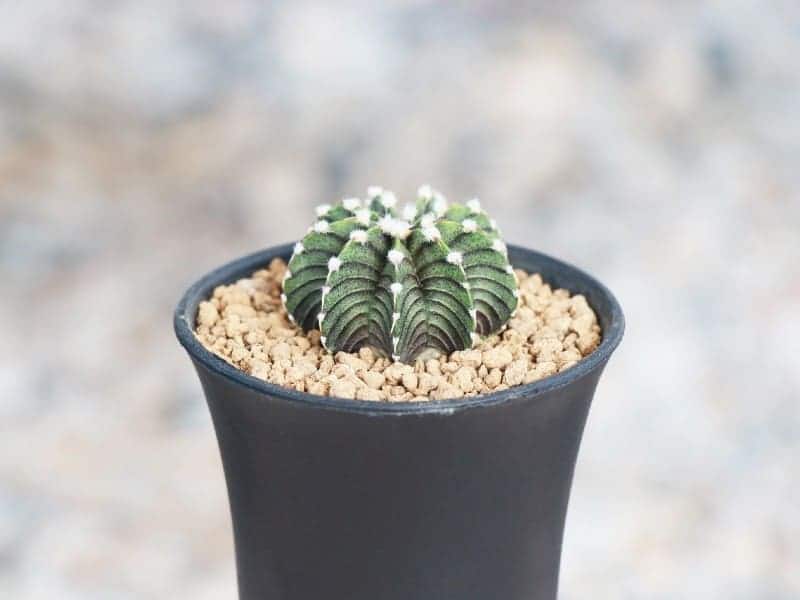
The Gymnocalycium Friedrichii is an easy succulent to propagate. It can be successfully propagated using two different methods, either from seeds or from cuttings.
Propagating from seeds
Cultivating your own Gymnocalycium Friedrichii succulent plant from scratch requires a lot of patience, but it is highly satisfying. If you propagate from seeds, you are likely to get numerous healthy plants.
In order to propagate this succulent from seeds, you will need to buy seeds from a reputable nursery or garden center. This is the only way to ensure that the seeds are of good quality.
The seeds of the Gymnocalycium Friedrichii are so small that it is almost impossible to see whether they are strong and healthy seeds, just by looking at them.
You will need the following equipment to plant your seeds.
- A planting tray
The planting tray should not be too deep. You do not want your seeds to get lost in the tray. The tray needs to have good drainage holes at the bottom so that the seeds do not rot in the water.
- A good soil mix
The soil should be a mixture of cactus potting soil and mineral grit, as detailed above. It is important that the soil should be well-aerated, in order for excess water to be able to escape.
- A plant dome
A plant dome is a cover that helps to protect the seeds from harm while they are germinating. There are many different types of plant domes available in stores and online.
Once you have all the equipment ready, follow these steps:
- Set up your equipment in an area that is completely shielded from the wind. The seeds are so small that they are almost weightless, and will blow away very easily if caught up in a draught. It is recommended to do the actual planting indoors.
- Fill the planting tray with the soil mix, up to about one inch from the top of the tray.
- Water the soil thoroughly and deeply.
- Allow all the excess water to drain out of the holes at the bottom of the tray.
- Gently sprinkle the seeds along the surface of the wet soil. Do not bury them in the soil or push them down into the soil.
- Cover the tray with a plant dome. Succulent seeds need humidity in order to germinate successfully. Covering the tray of seeds with a plant dome will help to create the necessary humid atmosphere.
- Choose a warm and sunny spot for your seed tray. The seeds will need sunlight in order to germinate and grow. They will also need warmth, and should not be placed anywhere that the temperature might fall below 70°
- As soon as little shoots start to appear, your seeds are sprouting. It is now safe to remove the cover.
- Move the tray to an area that is light, but is not in direct sunlight for more than a few hours a day. Harsh sunlight may burn the seedlings as they are starting to develop.
- You should soon have healthy seedlings growing. These can now be transplanted into containers and cared for according to all the guidelines given earlier in this article.
Propagating from cuttings
The best time to propagate from a cutting is during the summer months. This is the Gymnocalycium Friedrichii’s growing season and the period in which you are most likely to be successful at propagating a new plant.
Propagating during the winter months is unlikely to yield good results. The plant will not grow during the dormant period.
When propagating the Gymnocalycium Friedrichii from a cutting, it is important to use a clean, sharp garden scissors or a knife to cut a piece of the succulent.
Using a utensil with dirt on the blade may introduce germs or bacteria into the newly cut surface. This will cause the cutting or the mother plant to become infected, and growth will be inhibited.
If the implement is not sharp enough, it may be difficult to make a clean cut. This may cause trauma to the stem, and the cutting will not take.
Using a clean, sharp scissors, cut a stem from the mother plant, as close to the base of the plant as possible.
Leave the piece to dry out for a few days, until a callus has formed on the cut surface. Insert the callused end into a pot of prepared potting soil and water lightly.
Water lightly every 2-3 days at first until the cutting starts to grow. Once it is growing well, the watering schedule can be reduced, according to the watering guidelines given above.
You should soon have a healthy, viable succulent plant growing in your container.
Common pests and problems with the Gymnocalycium Friedrichii
The two most common problems that are likely to affect the Gymnocalycium Friedrichii are overwatering, and insect infestations.
Overwatering
Overwatering is far more likely to harm your succulent than underwatering. If the Gymnocalycium Friedrichii is given more water than it needs, the roots will be left in soil that is always wet or damp. This will result in root rot, which will ultimately kill the plant.
If the leaves are starting to go soft and are turning brown, it is very possible that the roots are starting to rot. If caught early enough, it may still be possible to save the plant.
Remove the plant from the container, and gently tap it to remove all soil from the roots. If parts of the roots look black, carefully cut away the blackened parts.
Repot the plant in a clean container filled with new soil. Water sparingly, and take care not to water too frequently. Hopefully, the plant will recover.
Insect infestation
The Gymnocalycium Friedrichii is highly susceptible to infestation with mealybug. These insects are so tiny that they are difficult to see, but they can cause serious damage to your plant.
Mealybugs will leave a fine, powdery white residue on the underside of the leaves. The insects themselves tend to hide in the folds and crevices at the base of the leaves.
Over time, these pests will devour the plant if left unchecked. The only way to eliminate them effectively is by using a commercial pesticide.


